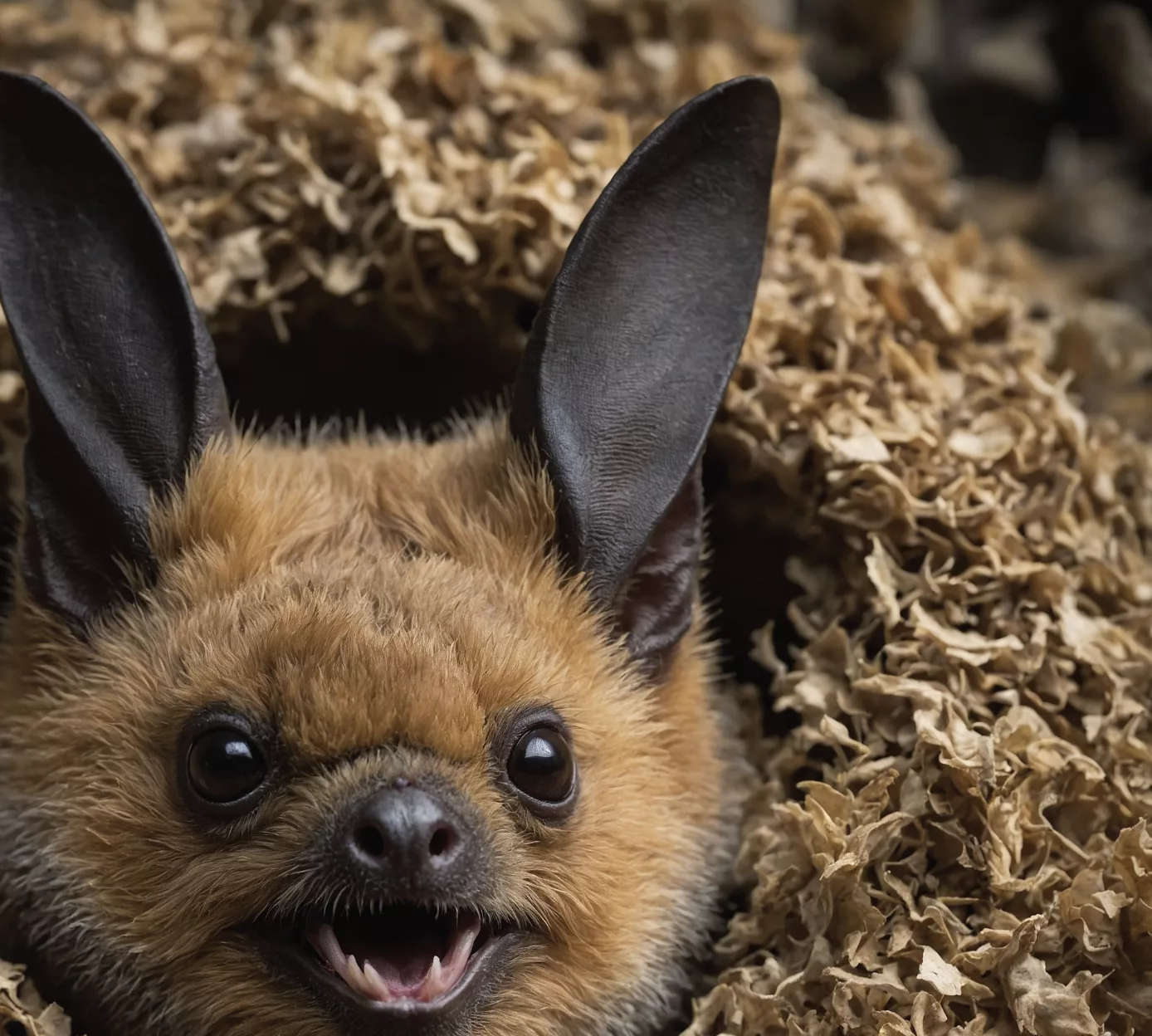
By Jim Knox
As we approach Halloween we share a renewed interest in what is perhaps the season’s most iconic creature–the bat. Connecticut is home to eight bat species: the Eastern Long-eared Bat, the Eastern Pipistrelle, the Silver-haired Bat, the Hoary Bat, The Indiana Bat, The Red Bat, The Little Brown Bat and The Big Brown Bat. The rare, Eastern Small-footed Bat has not been recorded in our state for several decades.
The two species most commonly found in the Nutmeg state are The Little Brown Bat and The Big Brown Bat. When gazing overhead on an autumn evening, these creatures are the ones we are most likely to see. To all but the most trained naturalists, an initial glimpse of a bat is a case of mistaken identity. We’re certain we’ve seen a bird, but the erratic, swooping, circling flight is unlike that of most birds. The fluttering wing beat is a give away that we are witnessing something altogether different. With bats, this “altogether different” category is a good place to start.
Bats are utterly unique among mammals in that they are the sole members of the class of more than 5,400 known mammal species which possess the power of flight. In fact, the order Chiroptera represents more than 1,200 known species of bats and is the most biologically diverse and numerous category of mammals. Chiroptera is Greek for “hand wing” and refers to the “hand-like” membranous wings of bats, covering their elongated “fingers”. This innovative design provides bats with a highly flexible and strong winged surface which can provide them with both instant lift and remarkably agile flying ability.
The power of flight has given bats a superpower which eludes all of their fellow warm-bodied, furred, nursing relatives–the exponentially-enhanced ability to: forage, flee, gather visual, scent, and auditory information, hunt and migrate. This “go anywhere / do anything” capability has enabled bats to take over the world. Well, not in the sense of a Bond villain…but with a resume which includes colonization of every continent except Antarctica, the vast majority of the world’s islands, and every major habitat from rainforests to deserts, bats are unrivaled.
And…it’s a good thing because bats are benevolent rulers. The benefits of bats are myriad. Yet a few of the more significant benefits to us humans include: natural, non-toxic insect control, fertilizer producers, pollinators, seed dispersers and “engineering consultants”.
A single native Connecticut Big Brown Bat can eat up to 1,200 mosquitoes (yes, two zeros there) in a single hour, making them the most effective known agent for protection against mosquito-borne illnesses. Bats produce nutrient rich guano which is a more effective fertilizer than livestock manure. Bats pollinate more than 530 species of flowering plants, contribute billions of dollars of productive fruit and flower cops to the U.S. agriculture industry and pollinate species including bananas, mangoes, guavas and agaves. Imagine a world without banana splits or agave syrup? I’d rather not. Additionally, these airborne innovators disperse seeds of native plant species over vast areas and in nearly inaccessible places, reinforcing our biodiversity and natural resistance to environmental threats such as forest fires, drought and floods. Lastly, and perhaps just as significantly, bats provide engineers, inventors and other designers with unmatched models for flight, navigation, echolocation, airborne communication and a host of other design challenges.
Yet due to pressures on their environment, including a devastating fungal infection known as White-Nose syndrome, bats are suffering losses. With serious population declines across the United States and around the world, bats need our help.
So what can we do to help them?
We can:
Reduce Pesticides (this helps bats to protect you and your loved ones from biting insects and avoids introducing toxins to your neighborhood)
Promote Natural Habitat (leave as many dead and dying trees around your home as possible, to provide roosting habitat for bats)
Put up a Bat House (you can provide a safe haven for bats, whether you have 100 acres or 100 inches of space)
As nature’s only flying mammals and avian innovators who have colonized every continent which sprouts a blade of grass, bats show us the way. By specializing, they have achieved remarkable success through diversity. Bats have taught us much and offer to teach us even more. Next time you behold a New England sky at dusk and witness the fluttering, high-powered flight of a Big Brown Bat, let a little inspiration take you to a place where you haven’t yet visited…a place you’d like to see more often.
Jim Knox is Curator of Education at Connecticut’s Beardsley Zoo where he directs education and conservation initiatives to advance the protection of wildlife in Connecticut and beyond.

